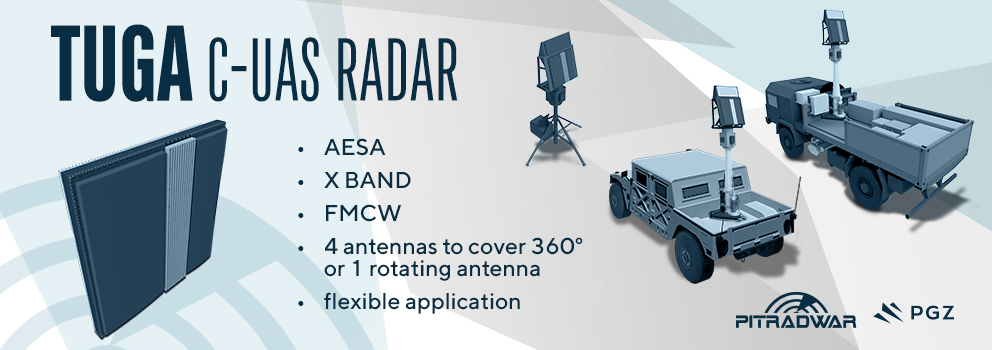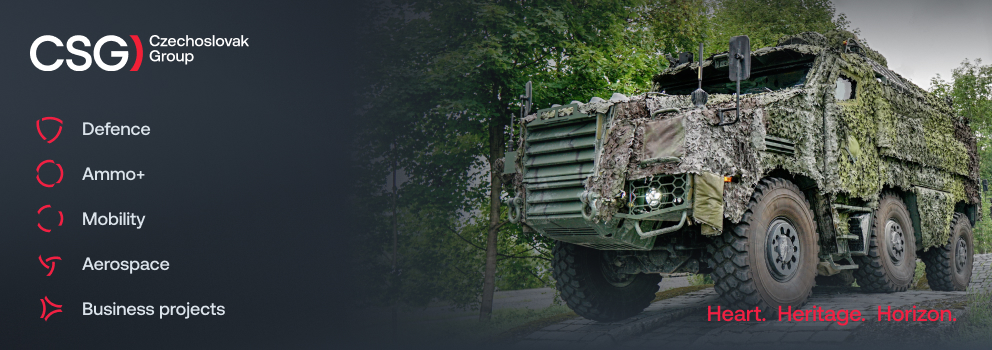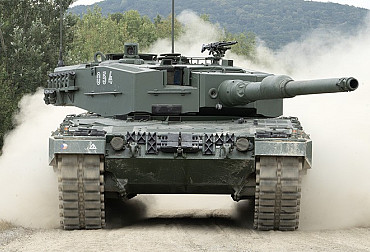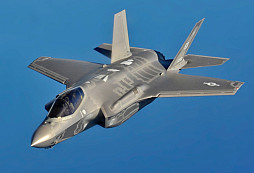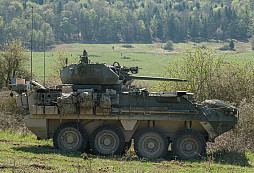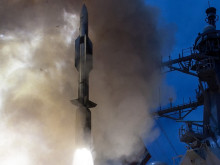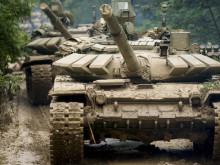Two paths to modernization: Poland and Czechia’s evolving defense strategies
Poland has significantly surpassed the Czech Republic in terms of defense spending as a percentage of GDP. Over the past four years, Poland's defense budget has increased from approximately 2.2% of GDP in 2021 to 4.7% in 2025.
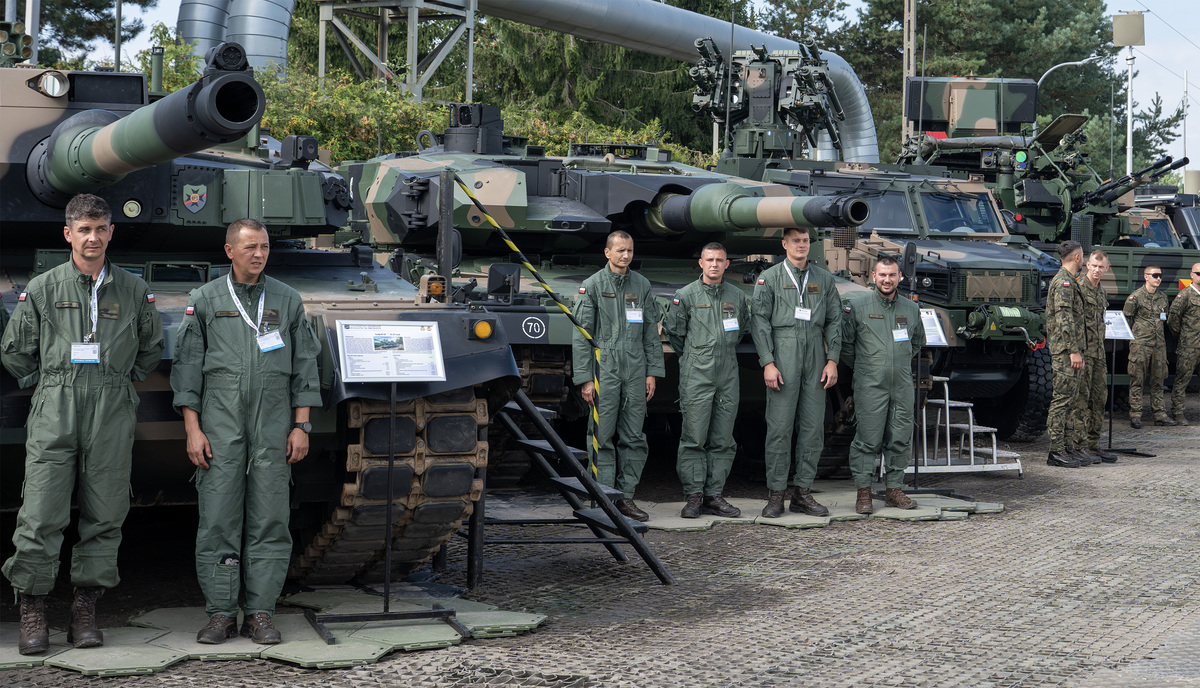
Over the past four years, in response to increased geopolitical tensions, particularly Russia's invasion of Ukraine in 2022, the Polish Ministry of National Defense has implemented an ambitious program to modernize the armed forces. This effort is supported by the Technical Modernization Plan for 2021–2035, which allocates approximately PLN 524 billion (more than CZK 2.9 trillion) for the procurement of equipment, with a focus on interoperability with NATO, the involvement of domestic industry, and rapid capacity building. Key legislative support in this regard is provided by the Homeland Defense Act of March 2022, which doubled defense spending to at least 3% of GDP (reaching 4.7% in 2025) and established the Armed Forces Support Fund (FWSZ) with EUR 7.3 billion in 2023 for off-budget purchases. By 2025, Poland's total defense spending is estimated at PLN 186.6 billion, of which more than 41% will be devoted to capital investments. These initiatives have led to the conclusion of more than 470 contracts worth EUR 131.9 billion (CZK 3.2 trillion), with an emphasis on tanks, aircraft, air defense, and unmanned systems.
The Polish Ministry of National Defense has focused on strengthening its armored and artillery capabilities with the aim of strengthening NATO's eastern flank. Key achievements include the acquisition of 180 K2/K2PL main battle tanks from South Korea, with another 180 planned, supplemented by a range of vehicles such as technical support, engineering, and bridge units. Of these, 61 tanks were manufactured in Gliwice through technology transfer to PGZ, with deliveries continuing until 2025 and a second contract signed in August 2025. In addition, Poland has acquired 250 M1A2 SEPv3 Abrams tanks from the US under a €4.66 billion (CZK 113 billion) contract that includes training, logistics, and ammunition, with deliveries from January 2025 to 2026, along with 116 M1A1 FEP Abrams tanks and 25 M1150 engineering vehicles, with delivery of these vehicles expected in 2029 following a €115 million contract amendment in July 2025.
The modernization of artillery has progressed with 212 K9 Thunder self-propelled howitzers from South Korea, with performance contracts activated in 2023 and deliveries accelerated in 2025, and 290 HOMAR-K rocket artillery launchers based on the K239 Chunmoo system, with 35 complete units delivered by November 2024 and full implementation expected by 2026. The ground forces also ordered 80 Rosomak wheeled armored personnel carriers and 12 variants for medical evacuation, with deliveries of 40 units planned for 2027 and 40 units for 2028, worth €250 million for the medical versions, while the domestic Borsuk infantry fighting vehicle began testing and first deliveries in 2025. These acquisitions support the establishment of new units, including two general-purpose brigades and an engineer battalion, and contribute to the goal of expanding the number of active personnel to 198,000 by 2025, with a long-term goal of 300,000 by 2035, including 50,000 volunteers from the Territorial Defense Forces.
The Polish Air Force has also undergone significant modernization, focusing on multi-role fighters, helicopters, and transport aircraft to increase interoperability with NATO. Poland has purchased 32 F-35A Lightning II fighter jets from the US, with deliveries set to begin in 2024 and full operational capability expected by 2028, when they will form two squadrons. The existing fleet of 48 F-16C/D Block 52+ aircraft is being upgraded to the F-16V standard with AESA radars, advanced IFF, communications, and simulators under a $3.8 billion contract signed in August 2025, with work to begin in 2026 at facilities in Bydgoszcz. In addition, 48 FA-50 light combat aircraft have been ordered from South Korea, including 12 GF variants and 36 PL variants, with AESA radar upgrades and AIM-9X/ AMRAAM missiles, with deliveries planned for 2025 to 2028, supported by ammunition contracts signed in June 2025. The Air Force has also strengthened its helicopter fleet with 96 AH-64E Apache attack helicopters from the US, including eight leased units for immediate readiness, with full delivery by 2030 and a pilot training offset agreement approved in 2023. In addition, 32 AW149 utility helicopters, manufactured domestically by PZL-Świdnik under a contract from July 2022, support both ground and naval forces. The modernization of 16 C-295M transport aircraft, including standardization and avionics upgrades, was initiated by a contract signed in December 2024, with work to begin in 2025. The goal of these efforts is to expand the air force to ten combat squadrons, based on the current three F-16 squadrons.
Although the achievements are significant—Poland has become one of NATO's most important contributors in terms of ground forces—budgetary pressures resulting from previous commitments (€87 billion between 2025 and 2035) and EU procedures in the event of a deficit are limiting new contracts until 2028. The Ministry of Defense emphasizes offsets to Polish industry (e.g., 160 out of 250 contracts worth PLN 13 billion in 2021–2022) and international partnerships, including a USD 4 billion loan guarantee in July 2025. Priorities for 2025 include divisional exercises, satellite programs (GLOB, PIAST), and defense spending of 5% of GDP.
The Czech Way
Over the past four years, the Czech Ministry of Defense has accelerated the modernization of the Czech Armed Forces. Its efforts are based on strategic documents and the 2023 Defense Financing Act, which stipulates a minimum of 2% of GDP for defense. The Czech Republic plans to reach 3% by 2030. Defense spending rose from approximately 1.3% of GDP in 2022 to more than 2% in 2024, totaling approximately CZK 164 billion, with 29.5% allocated to investments in 2025. In the past period, more than 20 large contracts were signed with an emphasis on armored vehicles, artillery, aircraft, and air defense, which, once implemented, will strengthen the position of the Czech Armed Forces within NATO.
Modernization of ground forces
The Ministry of Defense has set as its priority the establishment of a heavy mechanized brigade by 2026 and the replacement of Soviet-era equipment with NATO-compatible systems through high-value contracts involving Czech industry. A milestone in May 2023 was the acquisition of 246 CV90 Mk IV infantry fighting vehicles from the Swedish company BAE Systems Hägglunds for CZK 59.7 billion, including training and logistics, with deliveries starting in 2026 and full deployment by 2030; this contract secures at least a 40% share for Czech industry, including potential exports. In May 2022, the government secured 15 Leopard 2A4 main battle tanks from Germany as part of an aid exchange for Ukraine, later supplemented by 15 additional donated units and 14 purchased units. In June 2024, the government approved a plan to purchase up to 77 Leopard 2A8 tanks, with a contract for the first 44 units signed in September this year.
The modernization of artillery will proceed thanks to a September 2021 contract for 52 CAESAR 8x8 self-propelled howitzers from the French company Nexter for approximately CZK 20 billion (USD 900 million). The number of wheeled armored vehicles was increased under a framework agreement signed in 2021 for 62 TITUS 6x6 vehicles from the Czech company Eldis Pardubice. In August 2025, Rheinmetall signed a contract for the maintenance of Leopard 2A4 tanks and Bergepanzer 3 recovery vehicles, including the transfer of know-how to the state-owned company VOP CZ.
Modernization of the Air Force
The modernization of the Air Force focused on expanding existing platforms and transitioning to fifth-generation equipment, with significant cooperation from the US and Sweden. The current lease of 12 JAS 39 Gripen C/D fighter jets from Sweden was extended until 2035, bridging the gap until new acquisitions and ensuring the operational continuity of the 211th and 212th Tactical Squadrons at the Čáslav Air Base. A significant milestone was the January 2024 contract for 24 F-35A Lightning II fighter jets from Lockheed Martin worth approximately CZK 150 billion, including AIM-9X Sidewinder and AIM-120 AMRAAM missiles, GBU-53/B StormBreaker and GBU-31/B JDAM bombs. Deliveries will begin with six aircraft in 2029, accelerate to two aircraft per year in 2030, and continue at four aircraft per year through 2034.
Transport capacity was strengthened by an October 2024 contract for two Embraer C-390 Millennium aircraft, which will support NATO's transport needs. The standardization of small arms has progressed thanks to a framework agreement with Colt CZ Group, which will supply more than 16,000 BREN 2 assault rifles, 21,000 CZ P-10 pistols, 1,600 CZ 805 G1 grenade launchers, and 100 CZ Scorpion EVO 3 A1 submachine guns by 2025, worth CZK 2.35 billion. In May 2025, the US also approved a foreign military sale worth $181 million for communications equipment from L3Harris, including AN/PRC-160/163/167 radios, AN/PYQ-10A key chargers, and RF-300M data links, with the aim of enhancing interoperability.
Air defense and missile systems
Short-range air defense was reinforced in May 2025 with the approval of 24 MARS 4x4 armored vehicles from SVOS, each equipped with Saab's RBS 70 NG missile system, plus eight tripod launchers and 80 BOLIDE missiles, including training and spare parts. Mobile air defense radars (MADR) were put into operation, improving early warning capabilities. The army will also add a total of four SPYDER system batteries to its arsenal. Each battery consists of approximately nine pieces of equipment, including radar, four launchers, a reloading vehicle, and command and fire control systems. All elements are installed on Tatra 815-7 chassis. Deliveries will continue gradually until 2026, with the equipment delivered for the first battery undergoing military testing by the end of the year.
Despite some progress in the modernization process, there are obvious delays in projects such as the CV90 and Leopard 2A8, compared to the original intentions and plans, mainly due to the complexity of the acquisition process and limited financial resources.
Conclusion
Poland has significantly surpassed the Czech Republic in terms of defense spending as a percentage of GDP. Over the past four years, Poland's defense budget has increased from approximately 2.2% of GDP in 2021 to 4.7% in 2025, with total spending reaching PLN 186 billion (CZK 1.06 trillion) in 2025, of which more than 41% is devoted to capital investments. The 2022 Homeland Defense Act set a minimum expenditure of 3% of GDP, and Poland has used the Armed Forces Support Fund (FWSZ), adding EUR 7.3 billion (CZK 177.4 billion) to extra-budgetary purchases in 2023 alone. This aggressive financial commitment, which is expected to reach 5% of GDP in the coming years, reflects Poland's priority of rapid military reinforcement, given its proximity to Ukraine and Russia.
In contrast, the Czech Republic achieved NATO's target of 2% of GDP in 2024, with defense spending amounting to CZK 164 billion, and will increase to approximately 2.1% in 2025, of which 29.5% was allocated to equipment. Current spending remains significantly lower than in Poland, however. Poland has extensive modernization ambitions and strives to make its armed forces one of the strongest on the eastern side of NATO. The Czech Republic's ambitions are significant but more moderate, focusing on building a heavy mechanized brigade and maintaining interoperability with NATO.
Poland surpasses the Czech Republic in its modernization efforts when assessed in terms of investment, ambition, and results. Poland's higher defense spending (4.7% versus 2.1% of GDP) allows for a greater volume of acquisitions, including cutting-edge platforms such as Abrams tanks, F-35 aircraft, and Apache helicopters, supported by significant off-budget financing and international loans. Its ambitions are more far-reaching, aiming to transform the structure of its armed forces with 300,000 troops and a leading role in NATO's eastern defense. The results reflect this, with hundreds of contracts for the delivery of diverse, interoperable systems and a significant increase in personnel. While the Czech Republic meets NATO's 2% target and provides key assets such as the CV90 and F-35, it operates on a smaller scale, limited by its budget and population size. Poland's position stems from its larger economy, strategic urgency, and willingness to prioritize defense over other expenditures.
